In our last post we looked at two North-American sparrows which turn up every spring to
breed here, Savannah and Vesper Sparrows. This time let’s look at a sparrow you will only
see here in summer, the Lark Sparrow.
Lark Sparrow, distant but easily recognizable
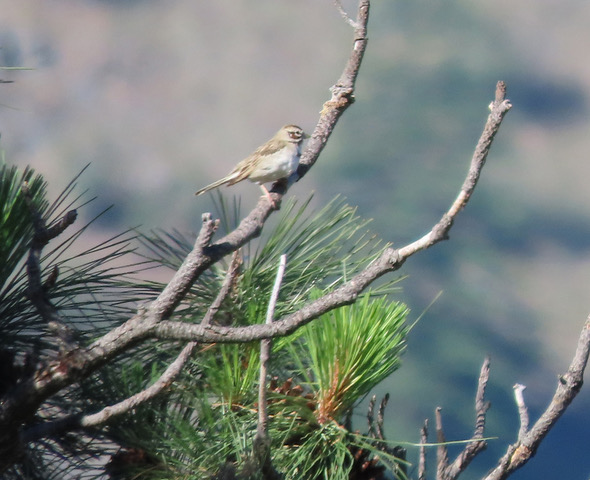
This is one of the few places in Canada where they can be seen. Most of their range is in the
western US, from the westernmost States eastwards to Ohio. Although these sparrows are
mostly found in the South Okanagan, especially the drier habitat in the White Lake
protected area or in the sagebrush near Osoyoos, they have been seen several times over
the years on Beaver Lake Road. As the climate changes, these instances have become more
frequent recently, and we can probably expect sightings here more often in the future.
Lark Sparrow foraging on the ground
Open habitats suit Lark Sparrows. Since they like to perch on fence wires or posts and sing,
spotting them is relatively easy if they are in the neighbourhood. They are large as
sparrows go, at 6.75”/~17cm and with a wingspan of 11”/28cm. Unlike many sparrows
which can be challenging to tell apart they are easy to recognize, even at a distance. Each
bird has a boldly patterned face and a single central breast spot on clean pale underparts.
The tail is longish, black and rounded with white corners, unique to the species. The song is
a series of trills, whistles and rattles on different pitches.
Lark Sparrow with a juicy insect to feed its young
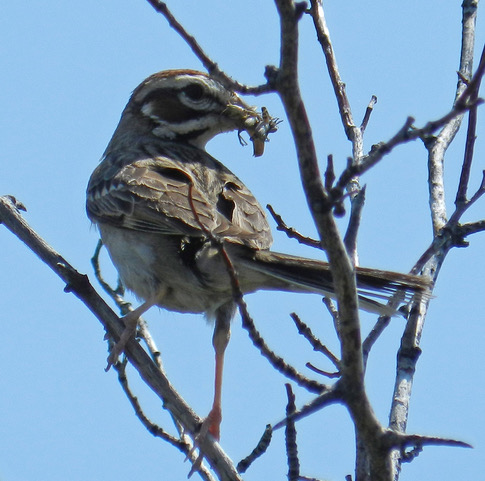
They like well-drained, poor sandy soils, and males are strongly territorial of their nest
sites. The cup-shaped nest is usually placed on the ground at the base of a plant, or just off
the ground in a bush or small tree, but not more than seven feet or so up. Three to five eggs
are laid in each clutch with one or two broods raised annually. While the female incubates
the eggs, both parents feed the fledgling chicks for nine – ten days after hatching until they
leave the nest.
Lark Sparrow, clearly showing distinctive facial pattern
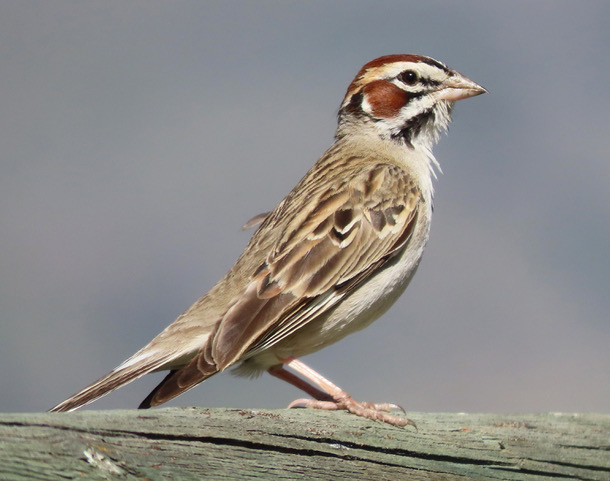
The young are fed mainly insects such as grasshoppers, beetles, caterpillars, spiders and
others, a good source of protein for growing bodies. Interestingly the parent birds forage
mostly on the ground, walking and hopping about in open areas. In winter these birds are
known to favour seeds, including those of grasses and weeds as well as waste grain.
Lark Sparrow singing, rear view
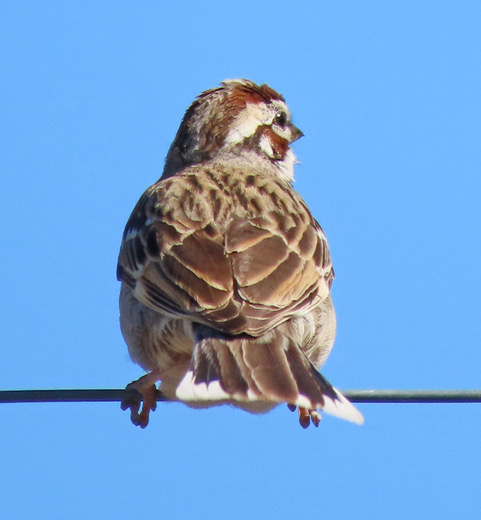
When you consider the habitat Lark Sparrows prefer – open areas, bare ground, dry sandy
soils, scattered bushes – it’s easy to see why they are much more common in the West
where such habitat is more often found than in the East. So keep your eyes open every
summer and look for these distinctive sparrows when you’re in the habitat they prefer. I
consider them quite a prize when I see one, and I enjoy the challenge of looking for them.
And always remember, “If you don’t look, you won’t see…”
Pam Laing
Okanagan birder
Postscript: After finishing this article in early June I led a field trip up Beaver Lake Road.
Two separate sightings of Lark Sparrows in the grassland habitat were noted during the
morning – so they are here!







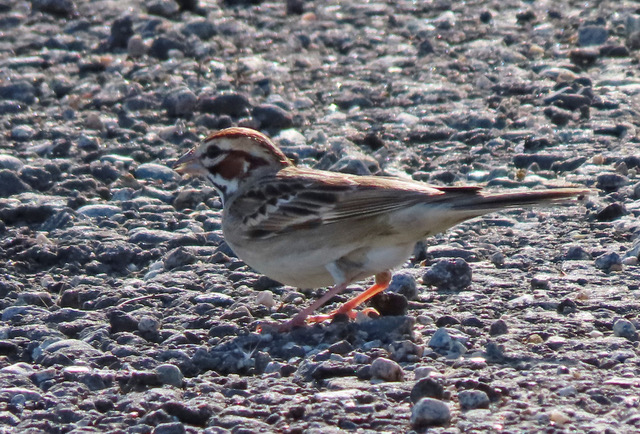
0 Comments